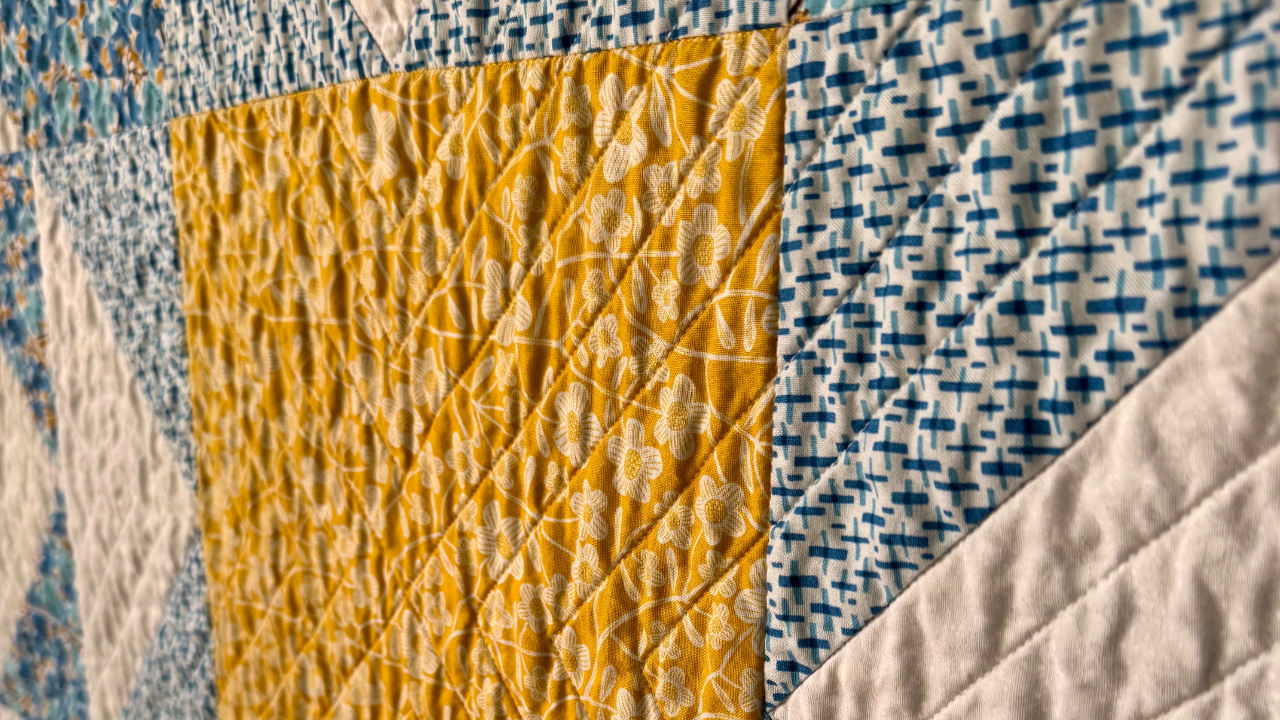
This post includes affiliate links. If you buy from my links, I earn a small comission at no extra cost to you. Thanks for your support!
To paraphrase Shakespeare, "To prewash or not to prewash. That is the question!" This is one of the biggest debates in the quilting community, so I’ll share with you when it might be a good idea to prewash your fabrics and when you might want to skip that step.
Prewash
Shrinkage
If you don’t like the crinkly appearance of a washed quilt, you should prewash your fabric so it shrinks before you start cutting. Also, different fabric lines can shrink at different rates, so prewashing your fabric can make sure everything stays true to size as you begin your project.
Color Bleeding
While we’ve made progress in how fabric is dyed, there’s still a risk of bleeding colors, especially if they’re darker or more saturated. It can be disappointing when you pull a finished quilt out of the wash and notice the darker colors have bled into the lighter ones. All that effort just ruined! To prevent color bleeding, prewashing is a smart step.
Chemicals and Sizing
There’s no denying that manufacturing processes involve chemicals. Some quilting fabrics may contain a bit of starch and sizing. If you have allergies or sensitivities, prewashing helps remove these chemicals, allowing you to avoid irritation while making your quilt.
Mixing Fabrics
If you’re not using 100% cotton quilting fabric for your entire project, it's best to prewash all materials because shrinkage can differ significantly. For example, if you’re using quilting cotton for the top and flannel for the backing, make sure to prewash those fabrics. Flannel shrinks much more than quilting cotton.
Don’t Prewash
Crinkly Quilts!
If you like the crinkly appearance your quilt gets after washing, skip the prewashing step. This allows your fabrics to shrink afterward, giving you that beloved look.
Precuts
If you’re using precuts like fat quarters or jelly rolls in your project, you definitely shouldn’t prewash those. These pieces are too small to go through the washing process without fraying or tangling.
Chemicals and Sizing
Those same chemicals that might make you want to prewash your fabric could also be a reason to avoid prewashing. They can make the fabric a bit stiffer and easier to handle during cutting and piecing. If you don’t have allergies or sensitivities, you might want to try it.
Fraying
If you’ve ever prewashed your fabric, I’m sure you’ve dealt with the frustration of pulling a tangled mess of frayed fabric out of the wash. This aspect of prewashing definitely makes it a deal breaker for me. I’ve been told you can clip the corners of the fabric to prevent fraying, but that’s never worked for me.
Ain’t Nobody Got Time for That!
You know what I love? Quilting. You know what I hate? Laundry. About 10 years ago, I was pressing some freshly washed fabric when I thought, "Why am I doing laundry when I could be quilting?!" That was the moment I decided I would confidently join the no prewashing camp and have been happy ever since.
Solving Color Bleeding
Whether you prewash or not, your quilting toolbox must include a supply of Color Catchers. These look like stiffer dryer sheets, but they actually catch any dyes that have come off your fabric before they can resettle onto another piece of fabric. The directions call for one sheet, but I’ll put two or more in the wash.
If I decide that I absolutely must prewash fabric, I’ll throw in two sheets to ensure all the dyes are caught. If I’ve spent a lot of time making a milestone quilt for a loved one featuring maroon fabric that hasn’t been prewashed, I throw in four sheets. I’m sure I can get away with fewer, but I’m not taking any chances.
Whether you prewash or not, there’s a way to prevent color bleed for just a few cents per load or quilt. To me, that’s another reason not to prewash.
Where do you stand now? Having listed the pros and cons of both options, which side are you on? I personally haven’t regretted my decision to stop prewashing my fabric all those years ago.







